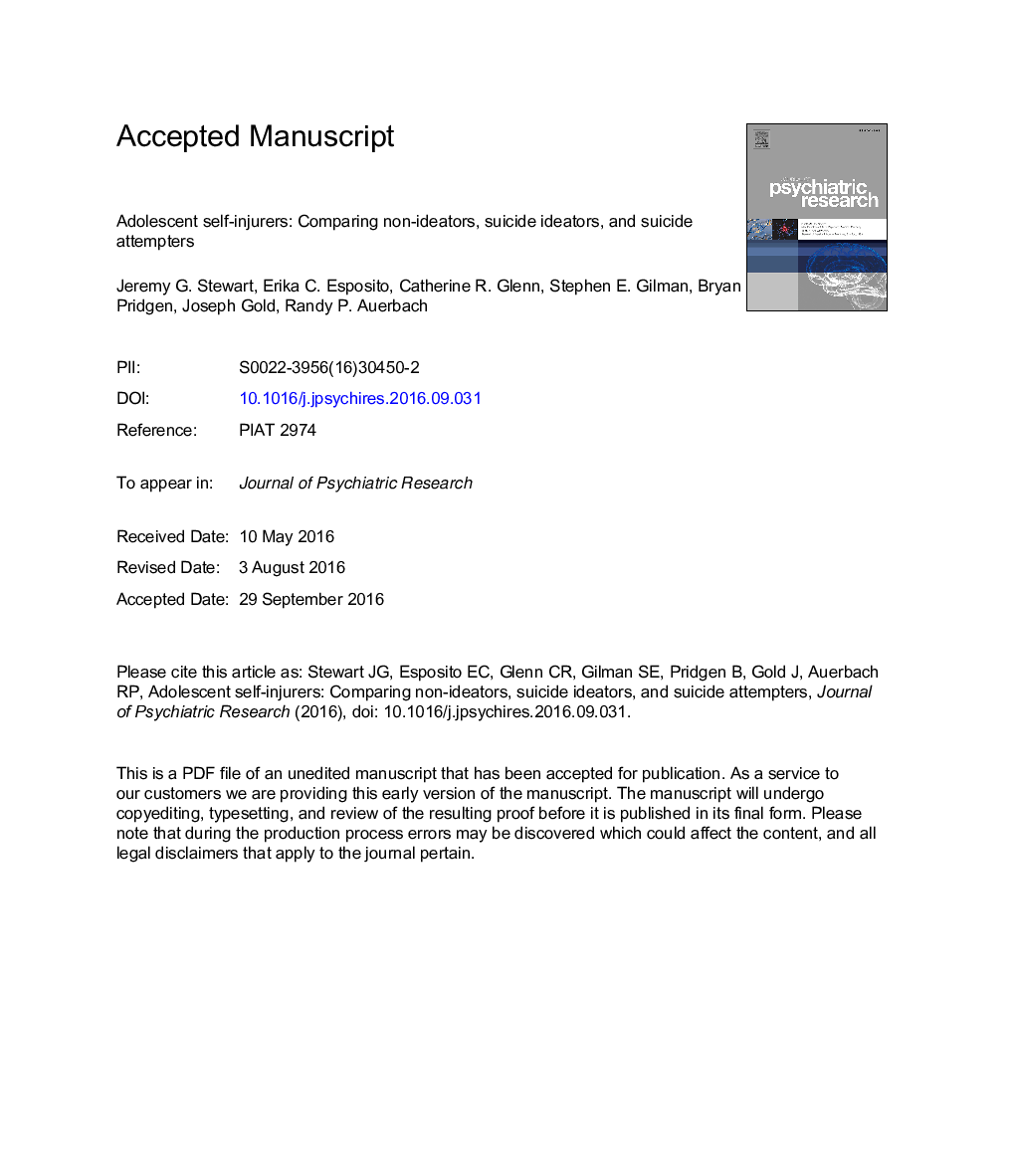| Article ID | Journal | Published Year | Pages | File Type |
|---|---|---|---|---|
| 4932187 | Journal of Psychiatric Research | 2017 | 35 Pages |
Abstract
Adolescent non-suicidal self-injury (NSSI) and suicidality are serious health concerns; however, factors that contribute to the transition from NSSI to suicide ideation and suicide attempts are unclear. To address this gap, we investigated whether demographic characteristics, child maltreatment, and psychiatric factors are associated with the level suicidality among adolescents with a history of self-injury. Participants were three groups of adolescent inpatient self-injurers (n = 397, 317 female), aged 13-18 years (M = 15.44, SD = 1.36): (a) non-ideators (n = 96; no current suicide ideation and no lifetime suicide attempts), (b) suicide ideators (n = 149; current ideation and no lifetime attempts), and (c) suicide attempters (n = 152; current ideation and at least one lifetime attempt). Participants completed interviews assessing psychiatric diagnoses, suicidality, and NSSI characteristics, as well as questionnaires on childhood trauma, psychiatric symptoms, and risky behavior engagement. Depression severity was associated with greater odds being a suicide ideator (p < 0.001, OR = 1.04) and an attempter (p < 0.001, OR = 1.05) compared to a non-ideator. Suicide attempters used more NSSI methods and reported greater risky behavior engagement than non-ideators (p = 0.03, OR = 1.29 and p = 0.03, OR = 1.06, respectively) and ideators (p = 0.015, OR = 1.25 and p = 0.04, OR = 1.05, respectively); attempters used more severe NSSI methods (e.g., burning). Our results identify a wide range of risk markers for increasing lethality in a sample at high risk for suicide mortality; future research is needed to refine risk assessments for adolescent self-injurers and determine the clinical utility of using risk markers for screening and intervention.
Related Topics
Life Sciences
Neuroscience
Biological Psychiatry
Authors
Jeremy G. Stewart, Erika C. Esposito, Catherine R. Glenn, Stephen E. Gilman, Bryan Pridgen, Joseph Gold, Randy P. Auerbach,
